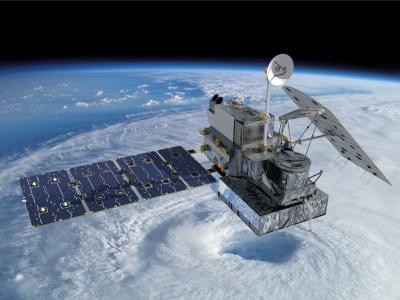Fight Against Orbital Litter May See Disposal Window Cut by 4/5ths
The FCC aims to reduce the disposal window for decommissioned orbital equipment: Up to 5 years after end of service, down from the more leisurely 25-year timeframe currently in effect.

The Federal Communications Commission released a fact sheet regarding the incipient issue of space debris above as the commercial space race heats up. Currently, after decades of governmental and commercial space exploitation, Earth has more than 4,800 satellites floating in orbit, both operational and decommissioned. That population may be just the start, they worry, as a never ending parade of private operators aim to establish an orbital foothold with additional equipment of their own. Under current regulations, operators must ensure that their satellites re-enter the atmosphere (for disposal) within 25 years following the completion of their mission. The FCC's new requirement would shorten that window for post-mission disposal down to 5 years.
The "Five-Year Rule" would require operators to put decommissioned satellites into uncontrolled reentry as soon as practicable, with a maximum time frame of 5 years following their mission's end. The new regulations would apply to manned satellites, too, meaning space stations ending their missions or passing through low-Earth orbit below 2,000 kilometers. The requirement would apply to US-licensed and non-US-licensed systems seeking domestic market acces under part 25 of the FCC's rules. Additionally, the rule would impose a companion requirement for entities applying for part 5 experimental licenses for satellites, or those seeking to deploy amateur satellites under part 97. The FCC has given a small amount of wiggle room, allowing a grandfathering period of 2 years for operators to get their upcoming deployments into compliance. In addition, certain types of research and scientific missions will be able to apply for waivers to the rule considering their missions.

The rule should provide some impetus for operators to minimize the amount of orbital flotsam that all nations continue to face, as well as provide a possible framework for other countries to impose similar regulations in a show of good space stewardship. The FCC said that the "additional costs imposed on the industry from this rule will be outweighed by the national benefits that come from reducing the probability of costly collisions and the commensurate reduction in service outages, as well as from reducing the frequency of collision avoidance maneuvers, among others." The rule stems from recent interest in the 25-year benchmark as being "outdated" in a rapidly expanding industry, with comments from the industry noting that it amounts to more than 5 generations of spacecraft. One notable passage including SpaceX input to the conversation added that the rules would be "crucial in promoting a safer orbital debris environment as well as addressing issues like the "mounting number of conjunctions,
collision avoidance maneuvers, fuel costs and other operational expenditures." The level of waste from debris has cascading effects on the ground, too, as operators are forced to alter launch schedules to account for clear space or increase the maneuverability of their satellites to find a suitable position.
Notably, launch service providers and constellation operators aren't the only ones to suffer from debris risks. The wider public has seen the application of satellite applications in their day to day lives expand greatly in recent years, particularly as projects aim to increase orbital internet relays for worldwide connectivity. "The Consortium for Execution of Rendezvous and Servicing Operations (CONFERS) also contends that the increased need for collision avoidance maneuvers due to the congestion in LEO impacts the general public as well because it increases the likelihood of service disruptions."
The Fact Sheet, "Space Innovation; Mitigation of Orbital Debris in the New Space Age" is included in the Second Report and Order in IB Docket Numbers 22-271 and 18-313.
 Airborne-Flight Training 05.09.24: ERAU at AIAA, LIFT Diamond Buy, Epic A&P
Airborne-Flight Training 05.09.24: ERAU at AIAA, LIFT Diamond Buy, Epic A&P ANN's Daily Aero-Term (05.07.24): Hazardous Weather Information
ANN's Daily Aero-Term (05.07.24): Hazardous Weather Information Aero-News: Quote of the Day (05.07.24)
Aero-News: Quote of the Day (05.07.24) NTSB Final Report: Cessna 150
NTSB Final Report: Cessna 150 Aero-News: Quote of the Day (05.08.24)
Aero-News: Quote of the Day (05.08.24)




